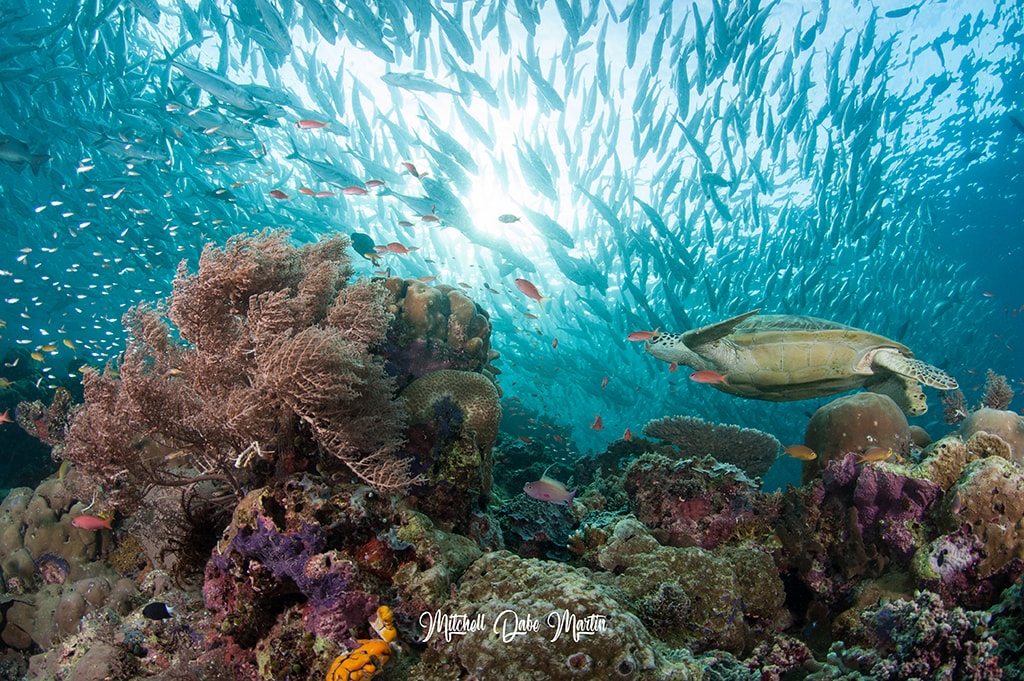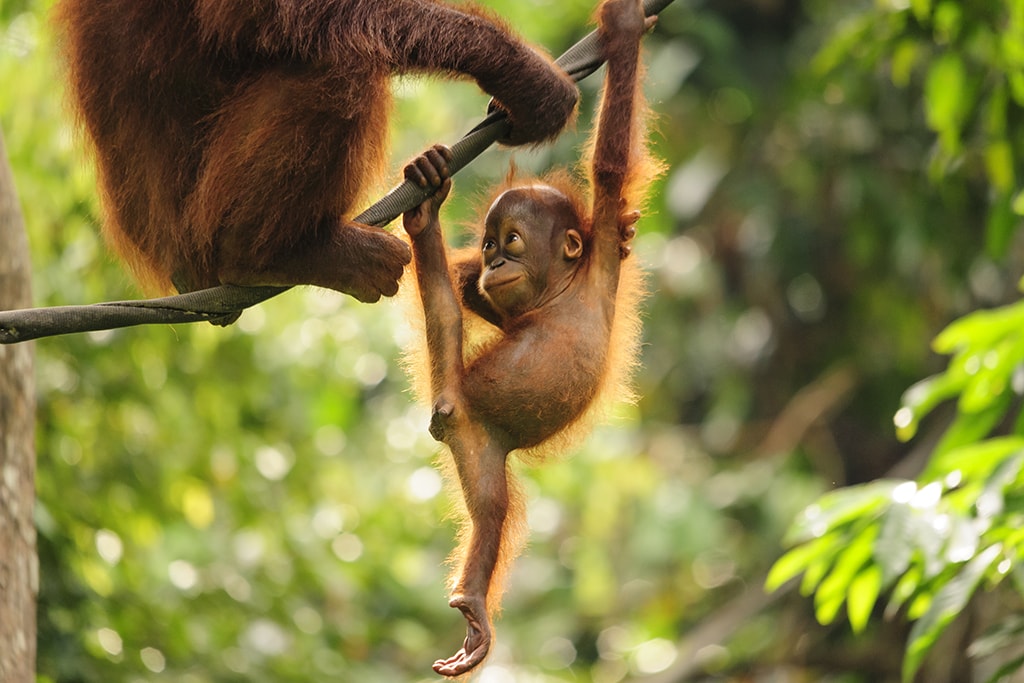
Malaysia is a land of contrast. It is one of Southeast Asia's most dynamic commercial centers, but it is also a land of pristine jungles and coral reef that hold treasures for nature lovers and divers alike. Its waters are among the most bio-diverse in the world, and the forests hold an equally impressive roster of species. If you don't know Malaysia, it's time to discover what awaits, both above and below the water.

The Crown Jewel for Divers
At the top of Malaysia's must-do dive list is Sipadan Island. This small speck of green is surrounded by shallows that drop abruptly to depths of 2,000 feet. These undersea cliffs become gathering points for schools of bumphead parrotfish, bigeye trevally and barracuda, which can shoal up in thousand-fish formations. Sipadan is also a gathering place for hawksbill and green sea turtles, and it's not uncommon to see a dozen or more on any given dive. Eagle rays and white tip sharks are a given on almost all sites, gray reefs congregate in deeper water, and there are chance sightings of mantas or a whale shark. Divers who take a closer look among the hard and soft corals that cover the walls will also discover an intriguing collection of smaller creatures.

Currents at Sipadan can range from mild to exciting and visibility can soar well past 100 feet. One of the more intriguing dive sites at Sipadan is Turtle Cave, where, at a depth of 60 feet, a tunnel leading into branching passages that lead under the entire island. Most divers take a peek but don't venture into the dark labyrinth, which holds the skeletal remains of turtles who lost their way and perished. Sipadan Island is now a protected marine park, with access limited to a maximum of 120 divers a day.

Mabul's Muck Magic
Because Sipadan is a nature preserve, with no permanent residents, visits to the park begin at resorts on nearby Mabul and Kapalai islands, which are a 20 to 30-minute boat ride away. In addition to serving as a jumping off point for Sipadan, Mabul has earned a reputation as a muck diving mecca. Surrounding its shores are a mixture of sandy and silty seabeds, coral outcrops, small walls and artificial reefs and jetties that harbor a treasure trove of marine life. These underwater landscapes are prime hunting grounds for cephalopods, including flamboyant cuttlefish, blue-ringed octopus, mimic octopus and bobtail squids.

Mabul also overflows with crustaceans, from harlequin shrimp, mantis shrimp, and cleaner shrimp to hairy squat lobsters, spider crabs, porcelain crabs, and more. Keen-eyed divers will find clown frogfish, along with other ambush predators such as leaf scorpion fish, dwarf lionfish, and crocodile fish. A survey of the bottom will reveal stonefish, stargazers, devil scorpionfish, and flying gurnards. Pipefish are common and tiny pygmy seahorses await discovery. Nearby at the over-water village of Kapalai, colorful mandarin fish perform intricate mating rituals among the pilings, mimic octopus, ghost pipefish and wasp fish lurk in nearby rubble fields. A short swim away, reef slope drops to open water and a collection of small wrecks add interest.

Rocking at Tioman Island
Also topping the list of Malaysian dive destinations is the island of Tioman, which lies 20 miles off the coast of Peninsular Malaysia. Movie buffs might recognize Tioman as the fabled Bali Hai from the classic film South Pacific. With green peaks and spectacular beaches, it has been called one of the world's most beautiful islands. Equally unique is the underwater landscape, which includes many sites riddled with large granite boulders. These natural labyrinths create a sheltering habitat for a wide range of marine life and provide divers with interesting swim-throughs to explore. In addition to these signature formations, there are slopes covered in dense growths of hard and soft corals, offshore pinnacles teeming with large schools of fish, and more than a dozen modern and historic wrecks.

Sabah's Natural Attractions
In contrast to Malaysia's capital city of Kuala Lumpur and the cosmopolitan landscapes of Peninsular Malaysia, the island of Borneo is a land of rainforests, mountains and traditional villages. The country's headquarters for eco-tourism is the state of Sabah, which is located on the island's northeastern corner. This is a land of towering treetop canopies home to orangutans and comical pot-bellied proboscis monkeys. Pygmy elephants roam jungles and grasslands, while crocodiles lurk on the banks of the Kinabatangan River. A centerpiece of the region is Mount Kinabalu, the tallest peak in Malaysia at more than 13,000 feet. An ascent of this peak is a multi-day adventure that's not for everyone, but there are also a number of easier treks into the surrounding upland forests. This area is known worldwide for an unrivaled botanical and biological species biodiversity. Botanists have documented more than 6,000 plant species in this part of Malaysia—a greater number than in all of Europe and North America combined.

Adrenaline junkies can go white water rafting on the Padas and Kiuli Rivers, while more leisurely cruises of the Kinabatangan river carry visitors through a wildlife sanctuary that is home to more than 200 species of birds. Other favorites include visits to the Sepilok Orangutan Rehabilitation Center and the Gomantong Caves, where passages soar to nearly 300 feet high.

We work with Malaysia's top dive resorts and tour operators to create special diving packages and land adventures. To learn more, call us at 800-330-6611, or send a note to sales@caradonna.com.